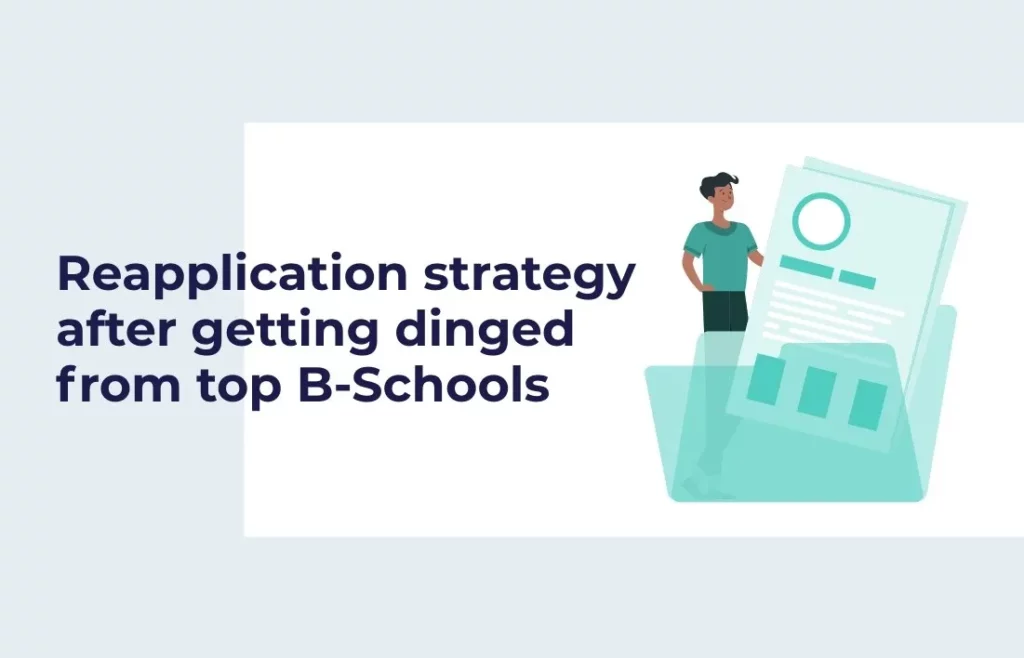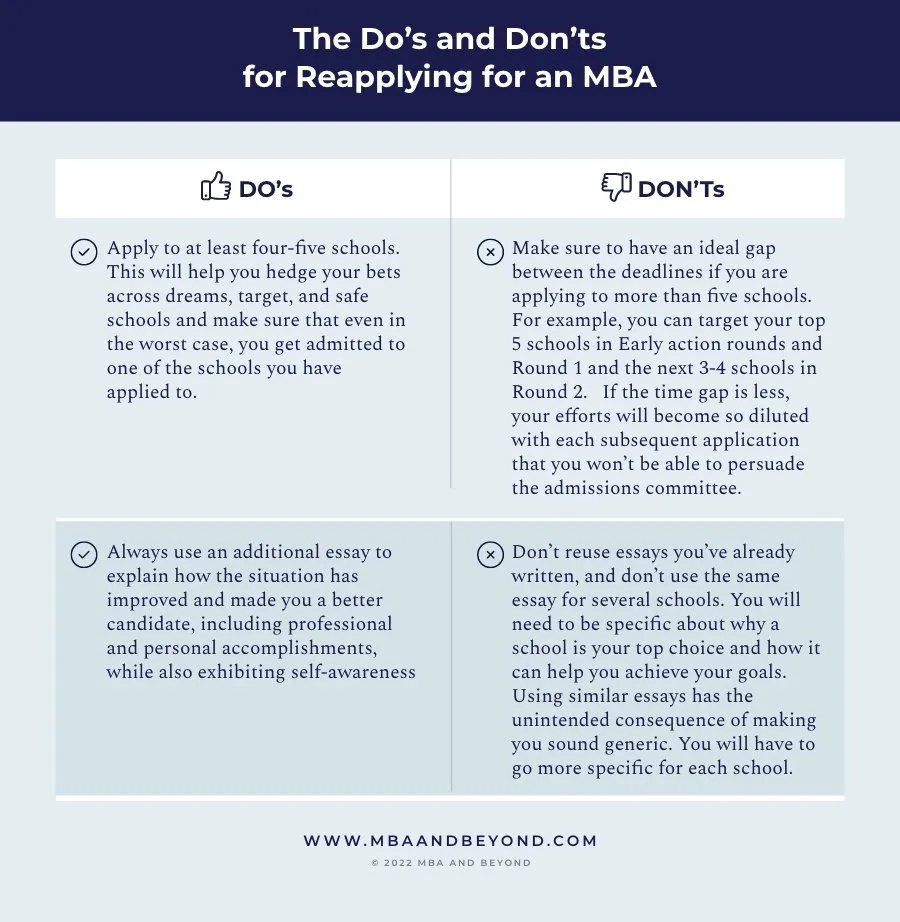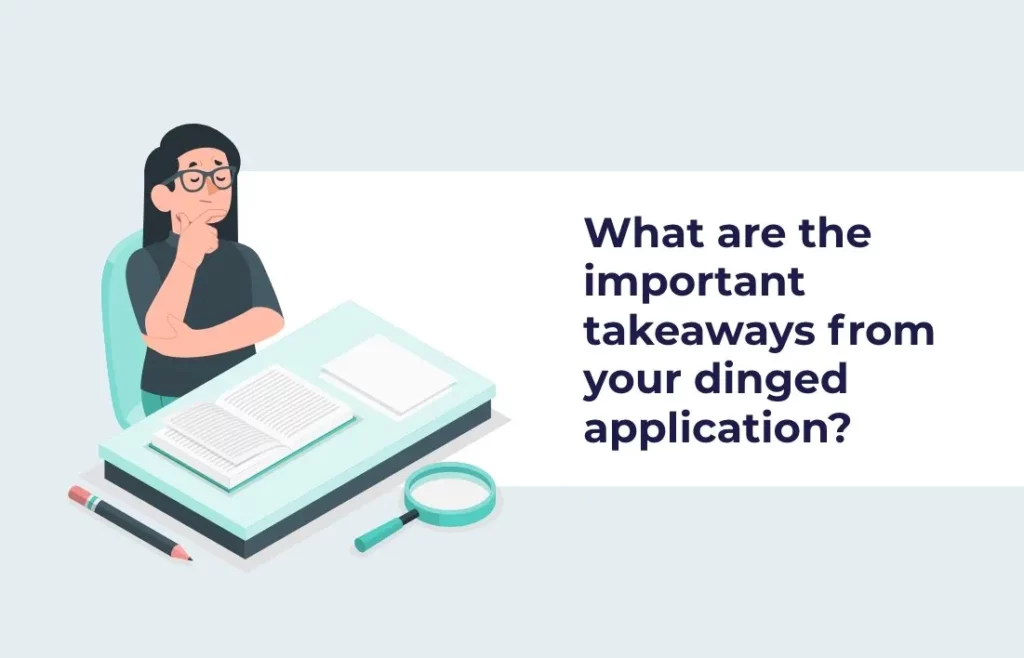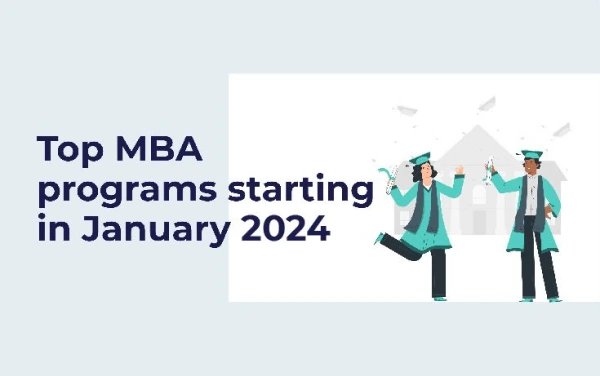MBA Reapplication Strategy after getting dinged from top B-schools

MBA reapplication can be a challenging journey, especially after facing rejection. However, it is important to approach it with resilience and a willingness to learn from past experiences.
Being rejected from a business school does not define your abilities; instead, it presents an opportunity for reflection and growth. By carefully reviewing the feedback provided, identifying areas for improvement, and crafting a stronger application, you can increase your chances of gaining admission to your desired program.
Remember, setbacks are a natural part of this process, and with determination and strategic planning, you can transform them into stepping stones towards achieving your MBA aspirations.
Reapplicants now face a more perplexing dilemma; they don’t know why they were rejected or how to improve their application for success.
This article serves as a comprehensive guide for MBA reapplication, encompassing all the crucial factors to consider before reapplying. We’re here to help you understand why your application might have been turned down and to give you top tips for a better next try.
What could be the reasons for getting “dinged” in your application
Having great grades while volunteering and juggling a full extracurricular schedule may help, but it won’t guarantee you a slot at one of these elite business schools. Some applicants mistakenly believe that fulfilling all the criteria for a strong profile guarantees acceptance into M7/T10 B-Schools. If only it were the case!
A strong application requires you to pick all the pieces of your profile together and strategically. Your application can be rejected due to several unimaginable factors.
What are the primary reasons for “dinging” an applicant
The applicant did not invest proper time in the application ( Applicants rushed through the application in a few days and failed to bring out impactful stories in the application)
Did not brainstorm well enough on answering the reason for ‘Why MBA’?
Failed to bring out collinearity between the goals.
Did not bring out the right leadership examples.
Failed to highlight the strengths properly.
Generic post-MBA goals (People tend to choose very generic post-MBA goals like Management consultant or Product Management which can be their simple goals. But suppose you are coming from an over-represented background where applicants’ profiles are very similar. In that case, you will need to establish strong collinearity in your goals or craft a narrative of goals that can help you stand out).
The Applicants did not highlight unique aspects of their personalities. (which is very common in applicants getting dinged. That is why we have a Pre-Application phase with applicants. We help them introspect deep into their lives to bring out a 100% unique and impactful personality in the applications)
Should You Reapply for an MBA Reapplication
There are many examples of MBA reapplicants who have had great success in their second application round. While some experts suggest that MBA schools favor repeat candidates, the reality is quite different.
In MBA reapplication success, efforts to improve their application and candidacy mostly drive it, such as:
Retaking the GMAT and improving their score.
Getting a job promotion and highlighting career progression.
Enhancing their post-MBA employment prospects.
They are spending more time networking with MBA programs that interest them.
Deciding on a reapplication hinges on your aims and preferred institutions.
If you’re set on a top-tier, two-year MBA, pursuing reapplication becomes your path forward.
It’s a matter of devising the right strategy and fully committing to the process once again. However, if you believe that taking a break from applications to concentrate on strengthening your profile is a more prudent move, then MBA reapplication may not be the most suitable option at this time.
Offering- Have an extensive ding-analysis with our experts and know if you should reapply or not!
You can read the major factors that come into play while pondering over reapplying or not here. Just so you know, universities like UCLA and Yale offer feedback for rejected applicants to help them improve. You can reach out to your desired school’s admissions team to understand your rejection and learn what to do next.. The Dos and Don’ts for Reapplying for an MBA.

Want to pursue an MBA but not sure if your profile fits?
Talk to our Profile Experts to know your chances for a top MBA Program.
GET A FREE PROFILE ANALYSISMBA Reapplication: How Can You Strengthen Your Application This Time

If you reapply within a year after your initial application, most B-schools allow you to submit a shorter version of the original application. Many reapplicants opt to reuse their prior year’s essays and reference letters, and that’s acceptable.
However, it’s advisable to consider a revised version. After all, your essays might have contributed to your initial rejection. Therefore, putting effort into introspection and refining your application often results in essays that are notably different from their original counterparts.
Hear the story of this reapplicant and see the difference he made in his reapplication.
Pause before hitting reapply on your MBA! Do you really consider those schools your best fit?
Check if your profile (grades, experience, goals) aligns with theirs, and if the school’s culture matches your personality and ambitions. Finding the right program is key, so explore new options if needed!
For those applying again, choosing the right time is key. Applying early can be a smart move to highlight new job successes or get solid references sooner. However, rushing might backfire if you need more time to achieve and show off noteworthy results in a new position.
Review Your Application and Make Any Necessary Modifications
In the application process, the final and most significant stage is analyzing the application to ensure that we don’t overlook any important points.
Acing your MBA reapplication requires a thorough self-assessment. Analyze your previous application materials, essays, and any feedback to identify areas for improvement, like your GMAT score, essay content, or career goals. Don’t go it alone! Seek external feedback from alumni, current students, or admissions experts. Their insights can be invaluable in strengthening your MBA reapplication candidacy.
We review applications using a three-fold approach, acting as neutral observers to ensure your reapplication is comprehensive and showcases your strengths from every angle.
Considering the increasing difficulty of securing admission to a top MBA school, we strongly advocate seeking assistance from someone well-versed in the process. Collaborating with an experienced individual provides insights that may elude you, offering a distinct advantage over other reapplicants.

We hope this article provided you with some comfort and knowledge. Experiencing rejection is undoubtedly disheartening, and having been in your shoes before, we understand the toll it takes on an applicant. Rest assured, we’re here to support you through every step of the process.
If you’d like, you can get on a free profile evaluation with our Experts to get in-depth, extensive, and honest feedback on where you stand and how you should strategize your applications.
Frequently Asked Questions
1.
Should I change my MBA application strategy when reapplying
A: Yes, a new strategy can be beneficial. Tailor your essays to reflect personal and professional growth, clarify your career goals, and update your resume with new accomplishments. Additionally, consider applying to a broader range of schools or adding some that align closely with your strengths and post-MBA goals.
2.
What are the common mistakes to avoid when reapplying to MBA programs
A: Common mistakes include submitting the same application with minimal changes, failing to address the reasons for the previous rejection, and neglecting to show growth. It’s essential to demonstrate how you’ve worked on your weaknesses, taken on new responsibilities, or refined your career goals since the last application.




Leave a Reply